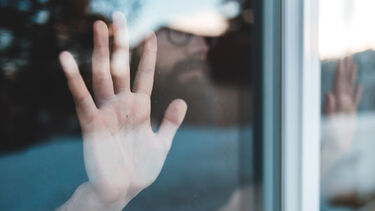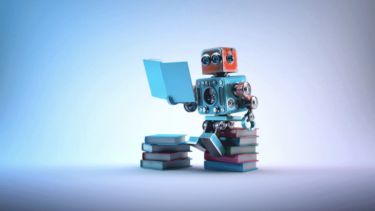- In this blog post we talk about our reading group in our research project, Cripping Breath.
- We explore the meanings of ‚Äėco-reading‚Äô - reading with others, in a large project and as a diverse research project team.
- We want to encourage researchers and others to co-read, and to do so creatively.
- We also want to highlight some of the institutional and processual challenges to doing inclusive co-reading.
Cripping Breath is built on the principles of co-production, which largely situate the co-creation of knowledge as central within the research process (. To us as a project team, Cripping Breath is a generative space where different kinds of ways of knowing come together: lived experience, embodied knowledge, interdisciplinary academic theory, empirical research approaches, and clinical expertise. The Cripping Breath team is diverse! Our full team consists of our Community Researchers, Artists-in-Residence, academic researchers, clinicians, and more recently, our new Artist and Theatre collaborators. This feels radical, exciting - sometimes full of tension - but always productive and exploratory (). In this blogpost we want to share our experiences of co-reading: our ways of reading together as a collective of people from different identity positions, locations and experiences, but who are brought together through our interests in respiratory illness and ventilatory technologies. We want to outline our explorations of co-reading as a shared experience and inclusive practice.
Last week, we hosted the second of our project reading group sessions. You can read about our first one on the power of breath here. Our aim in starting a reading group was to find spaces in the project for connection and shared explorations; prioritising ways to be together across a large project. Cripping Breath is a large research project, which stretches over four distinct-yet-connected work streams. Team members are largely aligned to one stream, so it’s imperative that we come together at certain points in the project to share ideas, reflect and connect. At the moment we do this through team meetings; project digests; co-authoring (see Ellis et al. 2025 and Liddiard et al. 2024); and now, through our reading group. The reading group was formed as an experimental space: we can try something different each time and see how team members feel about, respond to and engage with it.
While we congregate around different readings, materials and resources, the space created in the reading group is one of informality and interrelatedness. To make sure the group is inclusive, we don‚Äôt centre only academic texts (), but offer team members a range of texts: film, music, blogs, poetry, and academic journal articles (see here for the materials from our first session). So far, we have provided a ‚Äėreading list‚Äô (for want of a better term) of three to four readings team members can explore. Some people read and engage with them all; others choose one. Flexibility is key to inclusivity. Following feedback from the first reading group session, we included an asynchronous element for the latest session. Via Google Docs, we shared some excerpts of a poetry text (), through which the team could read and share comments prior to the online reading group session. This was a wonderful way for people who couldn‚Äôt attend to contribute and feel part of the session. But more than that, it was a way to share our thinking outside of ‚Äėlive time‚Äô, modelling methods of : an understanding that disabled people‚Äôs bodies and minds need flexed and flexible times, which counters the idea that ‚Äėexpectations of ‚Äúhow long things take‚ÄĚ are based on very particular minds and bodies‚Ķ‚Äô (Kafer (2013: 27). Shared reading spaces prior to the session also served to create more accessible routes into the more complex texts.
The theme for the second session was disability activism during the Covid-19 pandemic; on the list were a (Hale, 2020), a (Wong, 2020), a with disabled activist , and a (Read et al. 2023). As we shared our thoughts and feelings about the resources, we did so from quite different perspectives and subject positions. Our diversity as a team was revealed to us again here: people on the team who had shielded during Covid-19 to quite literally stay alive; clinicians working on the front lines saving lives and negotiating the deaths of others, while being at extreme risks themselves; and non-disabled researchers who’d had varied experiences of the pandemic as (new) mothers, workers, and family members of shielders - all learning from each other about the horrors of the pandemic for disabled and chronically ill people (and many marginalised others). This was powerful in terms of recognising and embodying the inequities of the pandemic and the differing meanings these had across the research team. This radical space enabled us to find connections and shared vulnerabilities across our stories. This is, to us, emblematic of the generative nature of co-reading as a practice that enables transdisciplinary dialogue in creative, constructive and accessible ways.
However, whilst we don‚Äôt wish to end on a negative note, it is important to reflect and acknowledge that co-reading is not always a straightforward process - particularly in co-produced research where team members often have varied statuses and relationships to a project, and are situated both inside and outside of academic institutions. For instance, we shouldn‚Äôt underestimate the practical and ethical challenges posed by inequitable access to certain kinds of reading materials. Ironically, as we seek to democratise knowledge generation through co-reading as a relational practice, institutional processes such as categorisations for assigning library access, often (unwittingly) work against the flexibility required in co-produced work, and require persistent, tenacious negotiation. This kind of additional administrative labour is undoubtedly wearing, but it can also ultimately impede efforts to dissolve barriers and problematise traditional hierarchies. In the - it hampers efforts to ‚Äėdo academia otherwise‚Äô; to rethink and recreate academic practices in ways that are inclusive and fit for co-produced knowledge.



